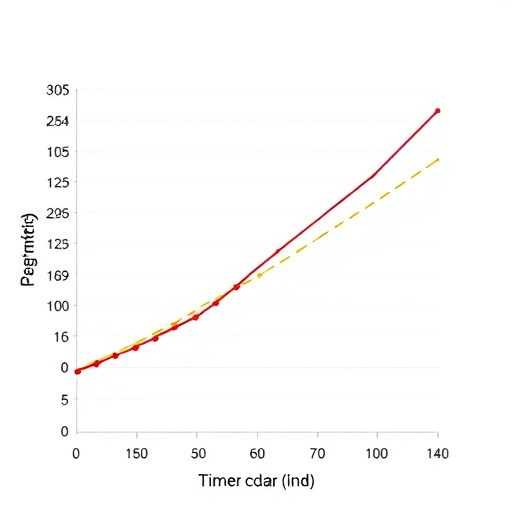Researchers are making significant strides in the integration of time-stamped electronic health records with genetic data, utilizing immense cohorts and biobanks. This fusion of information is enabling scientists to explore complex time-to-event phenotypes that can lead to groundbreaking discoveries in genome-wide association studies (GWAS). As time-to-event data play a crucial role in understanding various health outcomes, the demand for sophisticated statistical methods to analyze such data has risen sharply.
Despite the evolving landscape of GWAS, the challenge of case ascertainment for time-to-event phenotypes continues to be an underexplored area. Case ascertainment refers to the process of determining whether cases of a particular condition are identified and included in the analysis. The importance of addressing this issue is underscored by the potential biases it can introduce into the study outcomes. The need for innovative methodologies to accurately capture the complexity of these data sets has never been more critical.
In a recent study, researchers introduced a computationally efficient Cox-based method named WtCoxG. This new method specifically aims to accommodate case ascertainment issues by applying a weighted Cox proportional hazards null model. By focusing on this aspect, WtCoxG offers a promising solution to enhance the reliability of results derived from GWAS of time-to-event phenotypes.
Notably, WtCoxG employs a hybrid strategy that incorporates saddlepoint approximation. This mathematical technique significantly enhances the accuracy of analyses, particularly when it comes to low-frequency and rare genetic variants. The importance of investigating these variants cannot be overstated, as they often play crucial roles in the etiology of complex diseases. By refining the statistical power of analyses in this area, WtCoxG could revolutionize how researchers interpret genetic influences on time-to-event outcomes.
One of the remarkable aspects of WtCoxG is its ability to leverage external minor allele frequencies from public resources. This innovative approach not only enriches the analyses with more robust data but also considerably boosts the statistical power of the findings. By tapping into external data, researchers can improve their ability to detect associations that may have otherwise gone unnoticed. This aspect of WtCoxG is especially crucial when examining conditions like type 2 diabetes and coronary atherosclerosis, where nuanced genetic interactions play a pivotal role.
Extensive simulation studies were conducted to evaluate WtCoxG’s performance in comparison to established methods such as ADuLT and other Cox-based approaches. The results were promising, demonstrating that WtCoxG not only outperformed these traditional techniques in terms of power but also maintained rigorous control over type I error rates. This is a vital consideration in genetic studies, where false positive results can lead to misleading conclusions about potential associations.
Real-world data analysis from the UK Biobank further validated the advantages of utilizing WtCoxG. Researchers applied the method to investigate the genetic underpinnings of type 2 diabetes and coronary atherosclerosis, achieving promising results that underscored the value added by incorporating external minor allele frequencies. This practical application of WtCoxG underscores its potential to influence the future of genetic epidemiology and provide deeper insights into the pathophysiology of complex diseases.
The implications of this research extend beyond the immediate findings related to specific diseases. By demonstrating the effectiveness of WtCoxG in handling time-to-event data with careful attention to case ascertainment, the study opens new avenues for future research. It encourages a broader adoption of enhanced statistical methodologies that can tackle the intricate nature of real-world data in genomics.
Moreover, the development of WtCoxG reflects a wider trend within the scientific community towards embracing advanced computational techniques to address long-standing challenges in genetic research. As the volume and complexity of health data continue to grow, such methodologies will be fundamental in guiding researchers toward more accurate and meaningful conclusions.
In conclusion, the introduction of WtCoxG marks a significant advancement in the analysis of time-to-event phenotypes within genome-wide association studies. By addressing the crucial issue of case ascertainment and enhancing statistical power through innovative techniques, WtCoxG has the potential to reshape how researchers approach the complexities of genetic data. The continued integration of external databases and advanced statistical methods promises to further refine the landscape of genetic research, ultimately leading to better understanding and management of complex health conditions.
As the field of genetics continues to evolve, it is imperative that researchers stay at the forefront of methodological advancements. The incorporation of methods like WtCoxG reflects a commitment to improving the rigor and relevance of genetic studies, paving the way for future breakthroughs in understanding disease mechanisms and developing targeted interventions. This study exemplifies the dynamic interplay between data science and healthcare, reinforcing the notion that with the right tools, researchers can unlock the full potential of genomic data.
In a rapidly changing world, where health outcomes are increasingly tied to genetic factors, the significance of robust analytical frameworks cannot be underestimated. WtCoxG stands as a beacon of innovation, guiding the next generation of researchers in their quest to decipher the complexities of human health and disease.
The evolution of statistical methods in genetics is a journey shaped by collaboration, creativity, and an unwavering commitment to scientific inquiry. As researchers continue to push the envelope, methods such as WtCoxG will undoubtedly play a pivotal role in driving forward our understanding of the genetic intricacies that influence health outcomes, paving the way for more personalized and effective health interventions.
Subject of Research: Time-to-event phenotypes in genome-wide association studies
Article Title: Applying weighted Cox regression to genome-wide association studies of time-to-event phenotypes
Article References:
Li, Y., Ma, Y., Xu, H. et al. Applying weighted Cox regression to genome-wide association studies of time-to-event phenotypes.
Nat Comput Sci (2025). https://doi.org/10.1038/s43588-025-00864-z
Image Credits: AI Generated
DOI: 10.1038/s43588-025-00864-z
Keywords: Time-to-event, genome-wide association studies, case ascertainment, weighted Cox regression, minor allele frequencies, statistical power.
Tags: biases in health research outcomescase ascertainment in GWAScomplex phenotypes in health outcomeselectronic health records integrationgenetic data analysisinnovative approaches in epidemiologyreliability in genetic studiesstatistical methods for time-to-event datatime-stamped data in researchtime-to-event studiesweighted Cox regressionWtCoxG methodology





